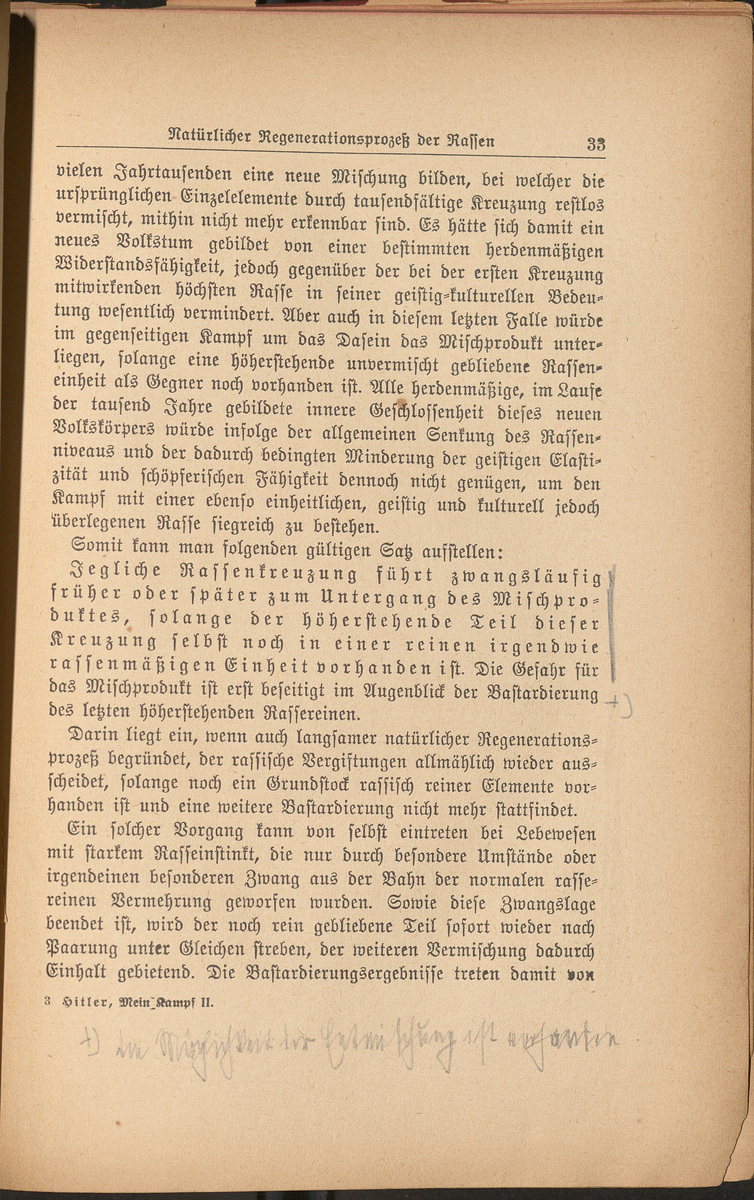Abstract
The ideological and political goals that Hitler formulated in 1924 in
Mein Kampf formed the basis of his
politics after 1933. And here, above all, it was his
Weltanschauung—grounded in a mixture
of antisemitism, biologistic racism, and vulgar Social Darwinism—that
was of decisive importance. In Hitler’s mind, the history of humankind
was marked by the constant, ruthless struggle of various civilizations
for preeminence. According to him, racial purity was the most important
precondition for victory, whereas racial mixing, especially with Jews,
weakened a people internally and doomed it to certain destruction. To
save the German Volk from this fate,
Hitler propagated the need for “de-miscegenation”
[Rassenentmischung]. That this idea
resonated with Heinrich Himmler (1900–1945) can be gleaned from the
marginal notes in his personal copy of
Mein Kampf (vol. II). Penned in 1927,
his comment reads: “die Möglichkeit der Entmischung ist vorhanden” [“the
possibility of de-miscegenation exists”]. Five years earlier, Himmler
had earned a degree in agriculture, and many scholars regard his early
training, specifically in animal husbandry, as the stimulus for his
later preoccupation with racial breeding. After seizing the reins of
Nazi population policy, Himmler would become one of the most radical
proponents of state-sponsored eugenics.
The paragraph marked by Himmler reads: “Jegliche Rassenkreuzung führt
zwangsläufig früher oder später zum Untergang des Mischproduktes,
solange der höherstehende Teil dieser Kreuzung selbst noch in einer
reinen irgendwie rassenmäßigen Einheit vorhanden ist. Die Gefahr für das
Mischprodukt ist erst beseitigt im Augenblick der Bastardierung des
letzten höherstehenden Rassereinen.” It is translated as follows: “Every
race-crossing leads necessarily sooner or later to the decline of the
mixed product, as long as the higher part of this crossing still exists
in some racially pure unity. The danger for the mixed product is
abolished only in the moment of the bastardization of the last higher,
racially pure element.” [Adolf Hitler,
Mein Kampf. Complete and unabridged,
fully annotated. New York: Reynal & Hitchcock, 1939, pp. pp.
644–45.]
